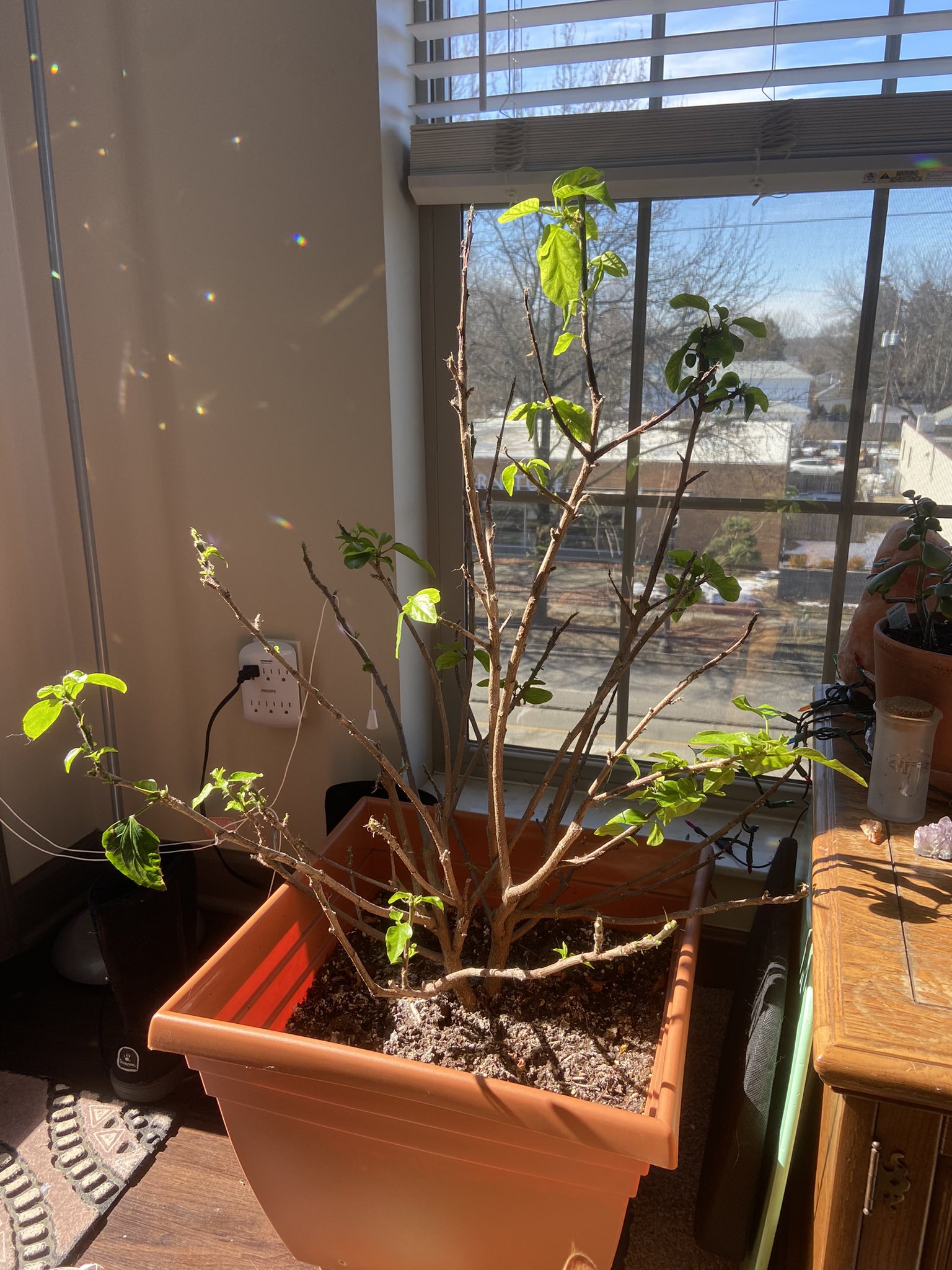It is hard to identify if your Hibiscus is dead or dormant based on dry or fallen leaves, especially during winter.
Thus, read on to unfold all signs that will help you determine whether your Hibiscus is dead or dormant.
Table of Contents Show
Signs of Dormant Hibiscus
Like other houseplants, Hibiscus undergo dormancy in USDA zone 4-9 during the fall and winter.
This hardy plant loses all of its leaves and flowers in winter. So, it is very easy to mistake a dormant Hibiscus for a dead one.

Hibiscus plants produce brown leaves with the first frost approaching and appear dead.
But before you make any decision, identify your dormant Hibiscus through the following signs.
1. Dormant Flowers
During the resting stage, the plant may get no blooms or uncommon flowers, if there are any. You may notice small, light green buds that stop growing.
Even the unbloomed flowers will drop on the ground.
2. Lack of New Growth
Hibiscus is unable to conduct photosynthesis and stops growing during dormancy. It won’t expect any new foliage, leaves, stems, or other signs of new growth.
The temperature also causes the plant cast leaves to look barren or stripped without leaves.
3. Brittle Branches But Not Trunk
Like the leaves, the bare limbs look naked without healthy foliage. Thus, dormant side branches may appear brittle due lack of moisture content.
However, the plant’s main stem remains healthy and does not turn dry throughout the winter.
So, you can prune completely dry, brittle branches as they are a goner. But do not cut the main stem or plant base.
4. Less Watering Requirement
Actually, dormant plants, including Hibiscus, do not need considerable supplies to survive dormancy. They undergo and complete dormancy without food, pruning, and other special care.
Relatively, watering is supposed to cut down during the fall and winter, only requiring it when the soil gets dry.
Hibiscus enjoys daily or 3-4 times a week watering during spring and summer, but a weekly supply will be enough during dormancy.
Tips to Take Care of Dormant Hibiscus
- Avoid watering the plant until it shows signs of growing; look for the sprouting leaves or stems.
- Don’t locate the potted Hibiscus under direct sunlight, as it can burn flowers, leaves, and stems, making the plant droopy.
- Even after the winter, the plant gets burned if you place it under the sunlight, which is normal. Don’t worry! It will recover soon, but you need to prune the weak stems if necessary.
- Whenever the temperature goes below 45°F outdoors, bring the potted plant indoors to save it from the cold.
- Spread the mulch around the base of Hibiscus to ward off the freezing temperature and save roots.
- You can also wrap the plant with a frost blanket to save it from snow and falling debris.
How do I Know If My Hibiscus Is Dead?
To know whether your Hibiscus is dead, you can scratch the top layer of the branch or stem. If the second layer is dry, brown instead of moist and green, then your Hibiscus is dead.
Unlike dormant Hibiscus, dead Hibiscus will not come back even after the end of the winter. So, you can discard the dead plant and plant a new one.
Besides that, you can check on other signs to know if your Hibiscus is dead or not.
1. Barren Leaves
Look for color and texture to differentiate between dead and dormant signs of plants.
It is normal for Hibiscus to shed leaves in the winter, but dead Hibiscus often have dry, crispy leaves still attached to the stem.
2. Stunt Growth
Although stalled growth is common in winter, it is not in the growing season.
So, if your Hibiscus has no sign of growth even in Spring, alongside other signs, then your Hibiscus might be dead already.
3. Dry, Brown Roots
If your Hibiscus has dry, brown leaves and stalled growth, you can check the roots to confirm whether they are dead.
Thus, if the roots are brown, mushy, or bone dry, your Hibiscus is dead.
How to Revive a Dying Hibiscus?
Although you can not revive or bring dead Hibiscus back, with prompt treatment, you can save a dying Hibiscus.
Here are a few ways to revive a dying Hibiscus.
- Amend Soil: Hibiscus does not like soggy soil, so give them well-draining, nutrient-rich soil with medium water retention.
- Adjust Watering Routine: Abstain from watering dormant Hibiscus plants to avoid root rot issues.
- Move the Plant: If the winter temperature dips below 45°F in your areas, preplan and plant Hibiscus in a pot, so you can move them indoors.
- Pruning: Carefully prune off the dead, decaying, or yellowing leaves so to ensure no energy waste.
- Pests and Disease Protection: Dormant plants are more prone to pests and diseases. So regularly inspect them for pests or their eggs and apply neem oil.
- Repot the Plant: If the soil is too compact and causing water-clogging issues, repot your Hibsicus. Also, repotting Hibiscus can help bring them out of dormancy.
Editor’s Note
Inadequate Care May Result in Longer Dormancy!
Even after the end of winter, Hibiscus may stay dormant under low-care conditions like excess water, sunlight, and lack of nutrients in the soil.
Furthermore, plants may not bounce back and wither out in severe winter conditions. So, give your Hibiscus ideal care to ensure they wake up after dormancy.
All The Best!
